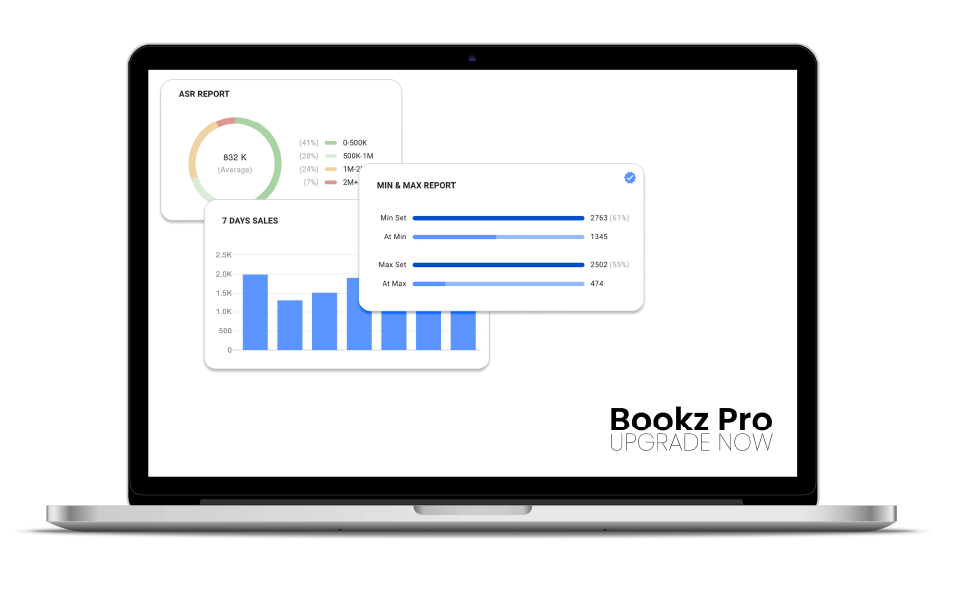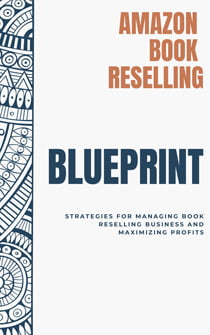What is Shipped and Sold by Amazon? Things You Must Know

Introduction
Selling on Amazon can be confusing, especially when trying to understand how Amazon’s role in a product listing affects your success. Many sellers become frustrated because it’s not always clear what this means for pricing and inventory management. Having Amazon on your listing can help your product get noticed and sell faster, but it can also lead to price competition. Amazon’s pricing strategies may prompt you to lower your prices to keep up.
A better understanding requires recognizing the subtle distinctions between two product types: “Fulfilled by Amazon” and “Sold by Amazon.” This blog highlights the differences between the two and provides guidance on how to recognize Amazon-owned products to help ensure the goods you acquire are authentic and trustworthy.
What Does It Mean When Something Is "Sold by Amazon"?
Look for the “Sold by Amazon.com” or a similar phrase within the product listing. It typically appears near the product description or seller information section.
Have you ever browsed Amazon and wondered where your purchases come from? Knowing who you’re purchasing from is crucial when seeking quality and reliable customer service.
In short, “Sold by Amazon” means you’re buying directly from Amazon. They manage everything: the product listing, the shipping, and any customer support you might need.
Benefits of Buying “Sold by Amazon” Products:
- Trustworthy Source: The product is authentic and comes from a reliable source. Amazon has strict quality control measures in place.
- Streamlined Experience: Amazon handles all aspects of the sale, ensuring a consistent and hassle-free purchase experience with one point of contact for product and service inquiries.
- Fast and Reliable Shipping: Many “Sold by Amazon” items qualify for Prime benefits, including free one or two-day shipping.
Look for the phrase “Sold by Amazon.com” in the product listing, typically near the product description or seller information section.
Remember:
While “Sold by Amazon’ offers a layer of trust and convenience, it’s always a good practice to read product reviews and compare prices before making a purchase. Next time you shop on Amazon, look for the “Sold by Amazon” tag.
Why Should You Care About Amazon's Product Offerings?
Before discussing sales strategies, it helps to understand the Amazon Vendor Program. This platform allows businesses to sell products in bulk directly to Amazon rather than to individual customers. This provides greater control over brand image but comes with trade-offs, such as giving Amazon pricing authority.
If you’re considering selling on Amazon, research what Amazon already sells. Competing with them directly can be difficult.
Avoid the Competition
Knowing which categories Amazon prioritizes helps you avoid direct competition. Instead, focus on offering products Amazon does not currently sell.
Pricing Power
Amazon can adjust prices quickly and may sell at lower prices than independent sellers. Understanding their inventory can help you identify profitable niches where you won’t be undercut.
All in One Software
for Book Sellers
Scout Better – List Faster – Reprice Smarter
Over 30% Business Growth
Achieved by Our Clients

Sold by Amazon (SBA) vs. Fulfilled by Amazon (FBA)
These two programs often get confused, but are fundamentally different:
- Sold by Amazon (SBA): Amazon owns the inventory, sets the prices, and handles fulfillment. Products are purchased directly from Amazon.
- Fulfilled by Amazon (FBA): Third-party sellers own the inventory and set prices, while Amazon takes care of storage, shipping, and customer service.
Connection Between SBA and FBA
To enroll in SBA, sellers must first use FBA. Here’s how it works:
- Create a product listing and select FBA as the fulfillment method.
- Ship your inventory to Amazon.
- Amazon stores the products and handles fulfillment, customer service, and returns.
Benefits of FBA
- Amazon Prime Eligibility: Attract Prime customers with fast shipping.
- Buy Box Advantage: Increased chances of winning the buy box.
- Operational Relief: No need to manage storage or shipping.
Choosing Products for FBA
Product selection for FBA should be research-driven. Consider:
- Demand: Avoid low-demand products that may not sell.
- Profitability: Calculate FBA fees and margins.
- Amazon’s Presence: If Amazon also sells the product, expect competition and potential price pressure.
What is Sold by Amazon (SBA)?
The SBA program allows brand owners to transfer ownership of products to Amazon. Amazon then sells and fulfills these products, using its dynamic pricing model that automatically adjusts prices based on marketplace conditions.
While SBA can enhance visibility and increase sell-through sales, it may also lead to reduced profit margins due to Amazon’s pricing strategies.
Pros of SBA
- Sales Tax Management: Amazon handles tax compliance.
- No Enrollment Fees: Joining the program is free.
- Buyer Trust: Products are seen as more reliable.
- Automated Pricing: Less effort is required to monitor the market.
- Selective Enrollment: Choose which products to include.
Cons of Amazon SBA
Minimum Gross Proceeds (MGP): Amazon sets a minimum payout, which may be low.
Sales Not Guaranteed: Competitive pricing doesn’t always mean more sales.
Branding Concerns: Deep discounts can damage premium brand perception.
Changing MGP: MGP is reviewed every six months, and changes must be accepted.
How do you apply for a sale by Amazon (SBA)?
To be eligible, you must be part of the Amazon Brand Registry. Your enrolled products must also be fulfilled by Amazon (FBA).
Steps to Get Started with FBA
- Create Your Amazon Seller Account: Sign up for an account on Amazon Seller Central.
- Create Product Listings: List the products you want to sell on Amazon.
- Prepare Your Products: Get your products ready for shipping.
- Ship Your Products to Amazon: Send your inventory to Amazon’s fulfillment center.
Register for Brand Registry
Once your products are ready, you can apply through the Amazon Brand Registry. For your application to be qualified, your trademark must be active and verified as your own. Here is how:
- Visit brandregistry.amazon.com
- Click “Enroll a New Brand.”
- Complete the application.
- Submit the trademark code received via email.
Enroll in the SBA Program
- Check product eligibility in your Seller Central account.
- Go to Settings > Account Info > Your Services.
- Click “Register” under SBA if available.
- Navigate to “Manage Inventory.”
- Click the SBA link and review eligible products and MGPs.
- Enroll products with acceptable MGPs.
Important Notes:
- MGPs cannot be changed.
- Products can be withdrawn from SBA at any time.
By following these steps, you can successfully apply for the Sold by Amazon program and potentially enhance your selling experience on Amazon.
Effortless Price Optimization Using Amazon’s Pricing Tools

Amazon Book Reselling Blueprint
Read now, explore our full guide. Your revolution starts here. Subscribe to get the blueprint!
For sellers looking to automate pricing strategies, tools like Bookz Pro provide intelligent repricing based on current market and Amazon data. Bookz Pro considers inventory age, sales velocity, and buy box status to help sellers stay competitive.
Get our free Amazon Reselling Blueprint to learn how Bookz Pro can help maximize your profitability and automate your pricing.
Conclusion
The Sold by Amazon (SBA) program offers customers confidence in authenticity and quick delivery while providing sellers with powerful automation and sales tools. However, it also presents challenges such as limited profit margins and potential brand dilution.
When combined strategically with FBA, SBA can help sellers scale operations and achieve better results. Understanding how these programs differ and complement each other is key to making informed business decisions.
Frequently Asked Questions
These are products that Amazon owns, stores, and fulfills, offering reliability and quality assurance.
Amazon owns and sells the product directly, providing full responsibility for authenticity and customer service.
Use the “Seller” filter in Amazon search and select “Amazon.com” as the seller.
SBA: Amazon owns and sells the product. FBA: You own the product; Amazon fulfills it.
Most items are returnable within 30 days. Use your Amazon account to start a return—many include free return shipping.



